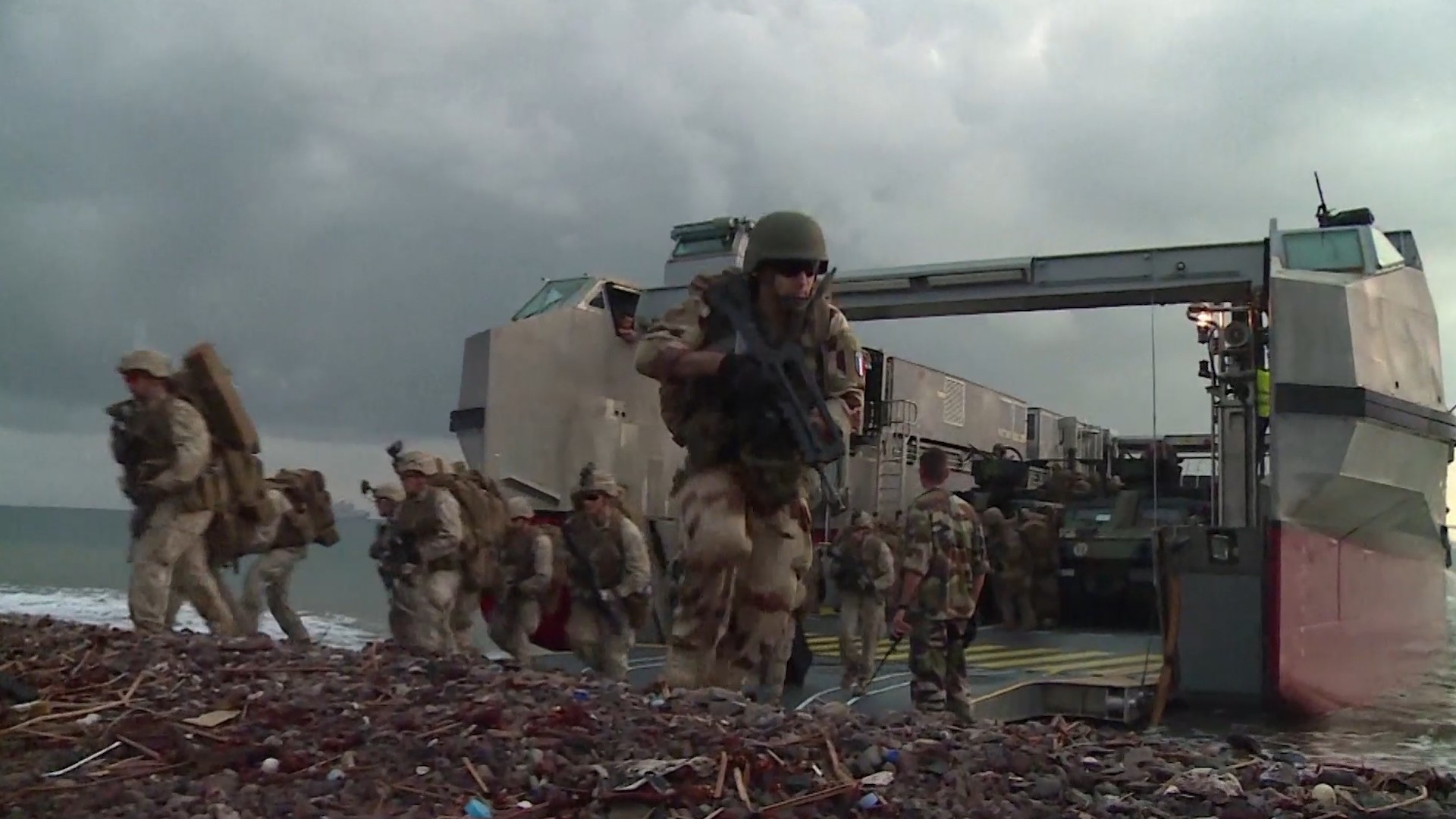The United States has over 290,984 active-duty and reserve troops in at least 180 countries and spends more on its military ($643 billion in 2017 and $700 billion in 2018) than China, Russia, Saudi Arabia, India, France, the United Kingdom, Japan and Germany combined. As the figures suggest, the U.S. is actively engaged in conflicts across the world, and not only in Afghanistan, Syria and Iraq, conflicts that have dominated the news, but in Niger, Somalia, Yemen and elsewhere too.
Advertisement
As 2017 comes to an end, VICE Impact takes a look at the knowns and unknowns of the U.S.’s major conflicts going on right now.The U.S.’s 16-year war in Afghanistan — its longest in history — is not over yet. Over the course of 2017, President Trump has increased America's presence in Afghanistan, according to government data. From June to September 2017, the U.S. military's presence in Afghanistan jumped from 13,333 to 16,500 active servicemembers.The military also trains and assists local troops, who then go out and do the majority of the fighting (and dying), keeping America casualties low. In fact, while 11 U.S. citizens died in Afghanistan this year, 6,785 Afghan security force members died in 2016 and 2,531 died in the first five months of 2017 according to a report by the Special Inspector General for Afghanistan, a U.S. Congressional watchdog.
Check out more videos from VICE:
The U.S. also provides air power, more than 2600 drones attacks in 2017 alone (double those in 2016), and intelligence.The numbers of troops on the ground in Iraq and Syria have also increased. From June to September 2017, U.S. troops in Iraq and Syria went up from 8,184 and 1,251 respectively to 9,123 and 1,723.In June 2017 alone, the U.S. military came into direct conflict with the Assad regime, Iran-supported Shiite militias, Hezbollah, possibly even Iran’s elite Islamic Revolutionary Guards Corps and nearly Russia.
Afghanistan
Check out more videos from VICE:

The U.S. also provides air power, more than 2600 drones attacks in 2017 alone (double those in 2016), and intelligence.
Iraq and Syria
Advertisement
A U.S. F-15 fighter jet took down an Iranian-made armed drone in southeastern Syria at the border between Iraq and Jordan. It was the second time in less than a month. It then downed a Syrian air jet in the east of Syria, which led to Russia threatening to shoot a U.S. aircraft west of the Euphrates river in Syria. The series of events left two nuclear superpowers in confrontation, in a sensitive war zone.The stakes aren't only political. Coalition air strikes in June to support an assault by U.S.-backed rebel forces on Raqqa, Syria, caused a "staggering loss of civilian life", Paulo Pinheiro, the United Nations war crimes investigators told the Human Rights Council on June 14, 2017, and also "led to 160,000 civilians fleeing their homes".The first U.S. combat death in Trump's presidency occurred when Navy SEAL William “Ryan” Owens was killed during a raid in Yemen in January 2017. But while the number of U.S. troops in Yemen is low, the U.S. involvement is not.The U.S. is, in fact, backing Saudi Arabia’s intervention in Yemen’s civil war, which pit the country’s leaders against Houthi rebels, in 2015. The US has dispatched warships to reinforce Saudi Arabia’s blockades on Yemen, which stopped the entry of goods and basic necessities and led to the world’s largest humanitarian crisis according to the UN.It has also refuelled Saudi planes,expanded its intelligence-sharing with Saudi Arabia, and in May 2017 it completed a series of arms deals for Saudi Arabia totalling more than $100 billion dollars. In 2017, there were more US airstrikes in Yemen than in the past four years combined.
Yemen
Advertisement
Niger, Cameroon, Chad
Advertisement
Somalia
Unknown
Advertisement
“Private military contractors perform tasks once thought to be inherently governmental, such as raising foreign armies, conducting intelligence analysis and trigger-pulling,” Sean McFate, an ex-PMC and now professor at Oxford University, told The Atlantic . And the U.S. has become increasingly dependent on them.In 2009, the ratio of contractors-to-troops in conflict zones was one-to-one. Today it’s about three- to-one. Hired by multinational private military companies, two-thirds of PMCs are not from the United States, which means both their existence rarely attracts headlines.And they are not only invisible. They are dangerous. In 2010, an investigation by the Senate into PMC in Afghanistan found evidence that some of these sub-contractors were linked to murder, kidnapping, bribery, and anti-Coalition activities. “Warlord, Inc.,” a report from the Subcommittee on National Security and Foreign Affairs Committee on Oversight and Government Reform, found that the Department of Defense had hired actual warlords for security services.The Bureau of Investigative Journalism tracks U.S. drone strikes and other covert actions in Pakistan, Afghanistan, Yemen and Somalia. They have put a spotlight on the use of military contracting in the US and elsewhere. Stay informed and help them provide the data needed to hold the White House accountable by contacting your congressperson.